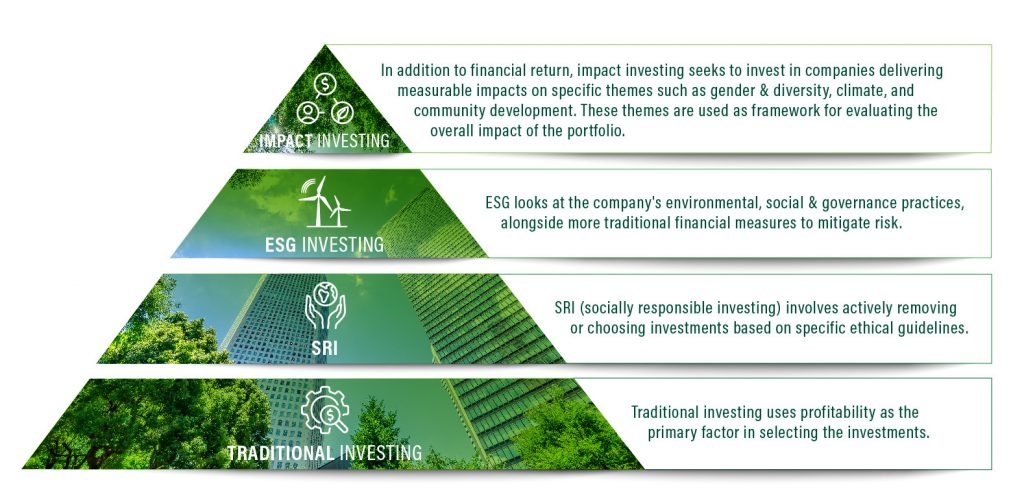By ESG Analyst Tanguy Montandon

Impact investing can be defined as investments that are made with the intention to generate positive, measurable social and environmental impact alongside a financial return. The idea of creating impact through finance has historically been strongly associated with private investments. As a result, the frameworks and practices used to measure impact have also been mostly developed to be applied to private markets. Because ventures that have not gone public are more likely to be at earlier stages of development and smaller than public companies, the assumption is that investors are funding innovation and buying proportionally more shareholder influence with private investments, subsequently having higher levels of additionality with the capital they deploy.
That said, public markets are much larger than private markets. Global equity markets’ value was estimated at $124 trillion for 2021 versus $10 trillion for private markets, according to SIFMA and McKinsey. With that in mind, and with higher barriers to entry in private markets, the question of whether investors can achieve impact in public markets and how to measure it is crucial. Focusing solely on private equity would be to omit a significant part of our financial ecosystem. As such, there is no fundamental reason impact investing should be restricted to early-stage startups but should instead apply to all businesses operating in society. Consequently, investors have increasingly begun to seek investment strategies that deliver positive outcomes, including in listed equities. Taking this reality into consideration, the Global Impact Investing Network (GIIN) has been working on that question, ultimately publishing this year a set of strategies and practices to spread impact investing to listed equities. Four key points made it to the list.
- Portfolio Strategy
To show that investors invest in companies that fit their impact thesis, it is necessary that their official documents state the intended real-world impact of the investment strategy. This is supported by a problem statement and a theory of change in their internal documentation that includes a description of how the fund will contribute to accelerating the targeted impacts of its portfolio companies. By establishing clear intentions, having a well-defined portfolio strategy limits the possibility of taking credits for the positive actions of companies in a fund’s portfolio while silencing the negative ones.
- Portfolio Design and Selection
Following the establishment of a portfolio strategy, assets should be carefully selected to fit its scope. A fund with an articulated strategy, a set of impact objectives, and an underlying theory of change that is documented and incorporated into fund policies and processes will need to select a portfolio of companies that can contribute to the goals targeted by the fund. All holdings should have a measurable relevance to the strategy and be assessed relative to the fund’s impact goals.
- Engagement
Once again, because listed companies tend to have larger valuations, their share ownership tends to be spread among a larger and more diverse number of investors than in private markets. From the perspective of investors, this results in a less concentrated ownership in a single investee, which can limit their ability to engage with and influence companies. As such, the engagement priorities must be clear and are developed based on the fund’s theory of change. They should strategically focus on actions that can accelerate the company’s contributions to the impact objectives of the fund. Effectiveness is measured in relation to progress or improvements that contribute to the portfolio investment strategy goals.
- Use of Performance Data
Portfolio managers should consider whether activities and outputs of companies are contributing to real-world changes consistent with the fund’s goals and theory of change to evaluate their impact performance. Concretely speaking, this involves measuring performance through metrics related to time and geographic specific needs, identified in portfolio strategies. As examples, targets can be science-based, such as in Net Zero strategies, location-based reference points, like absolute needs in a specific area, or population-based references, which can include the needs of a demographic.

